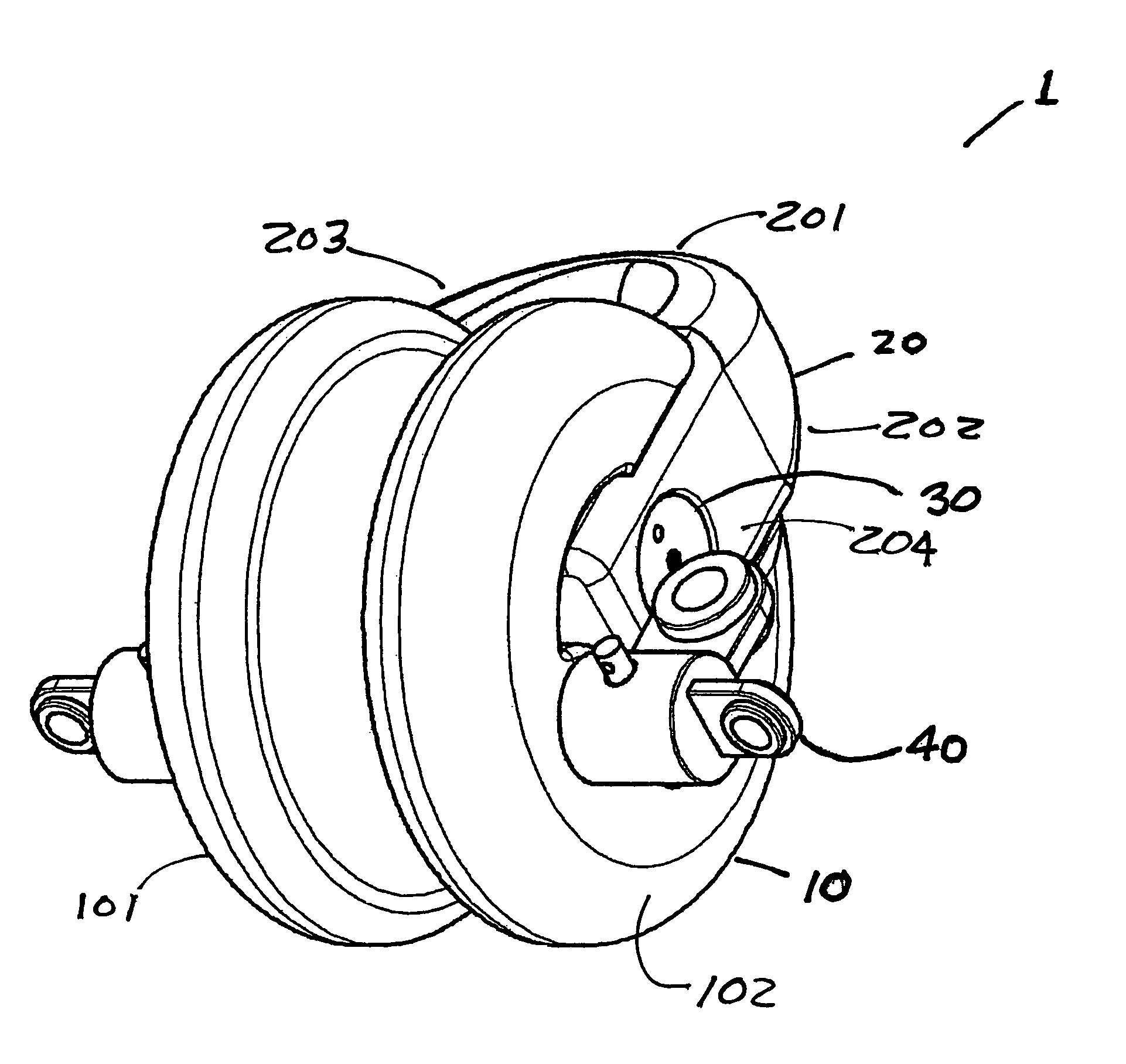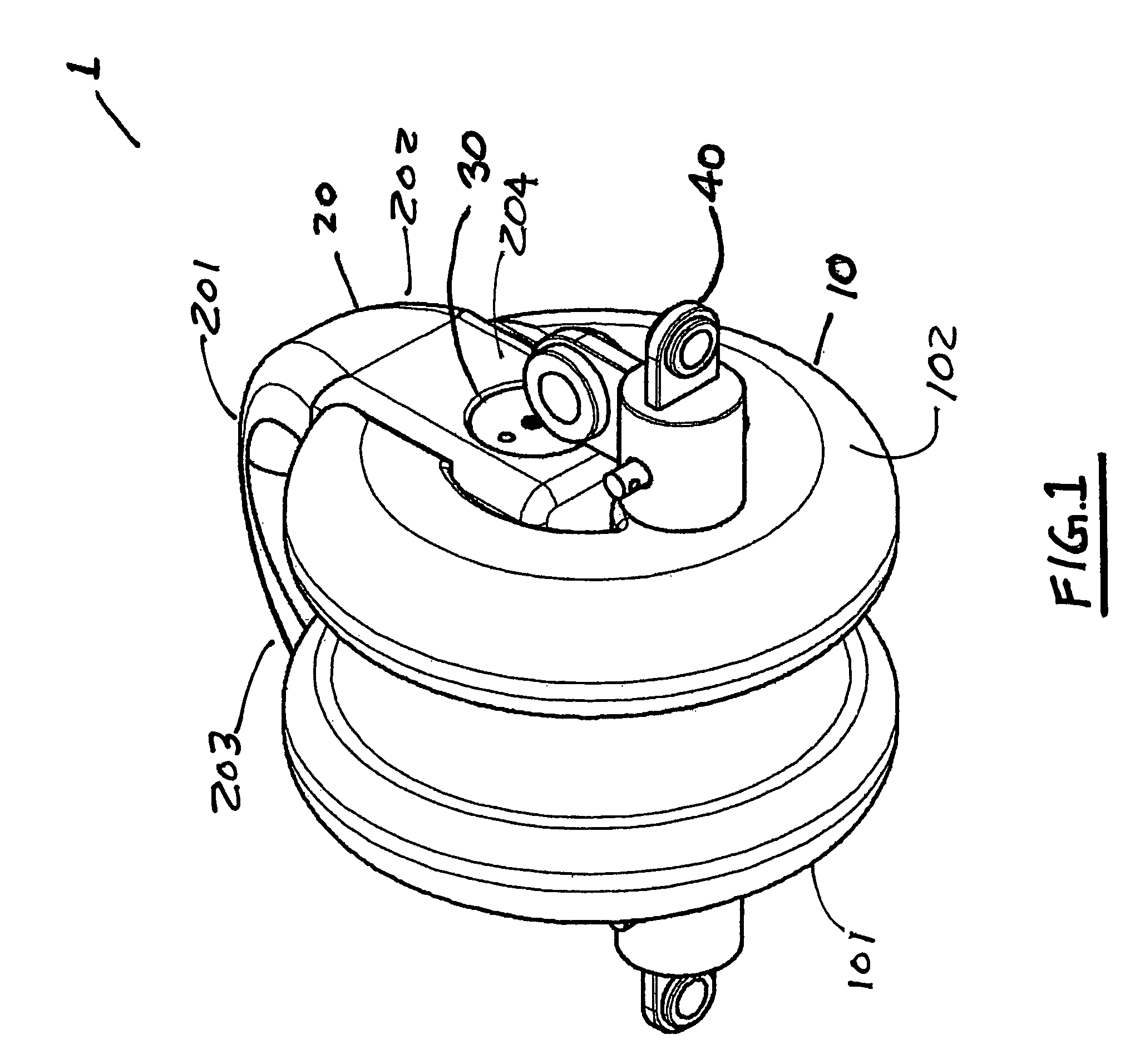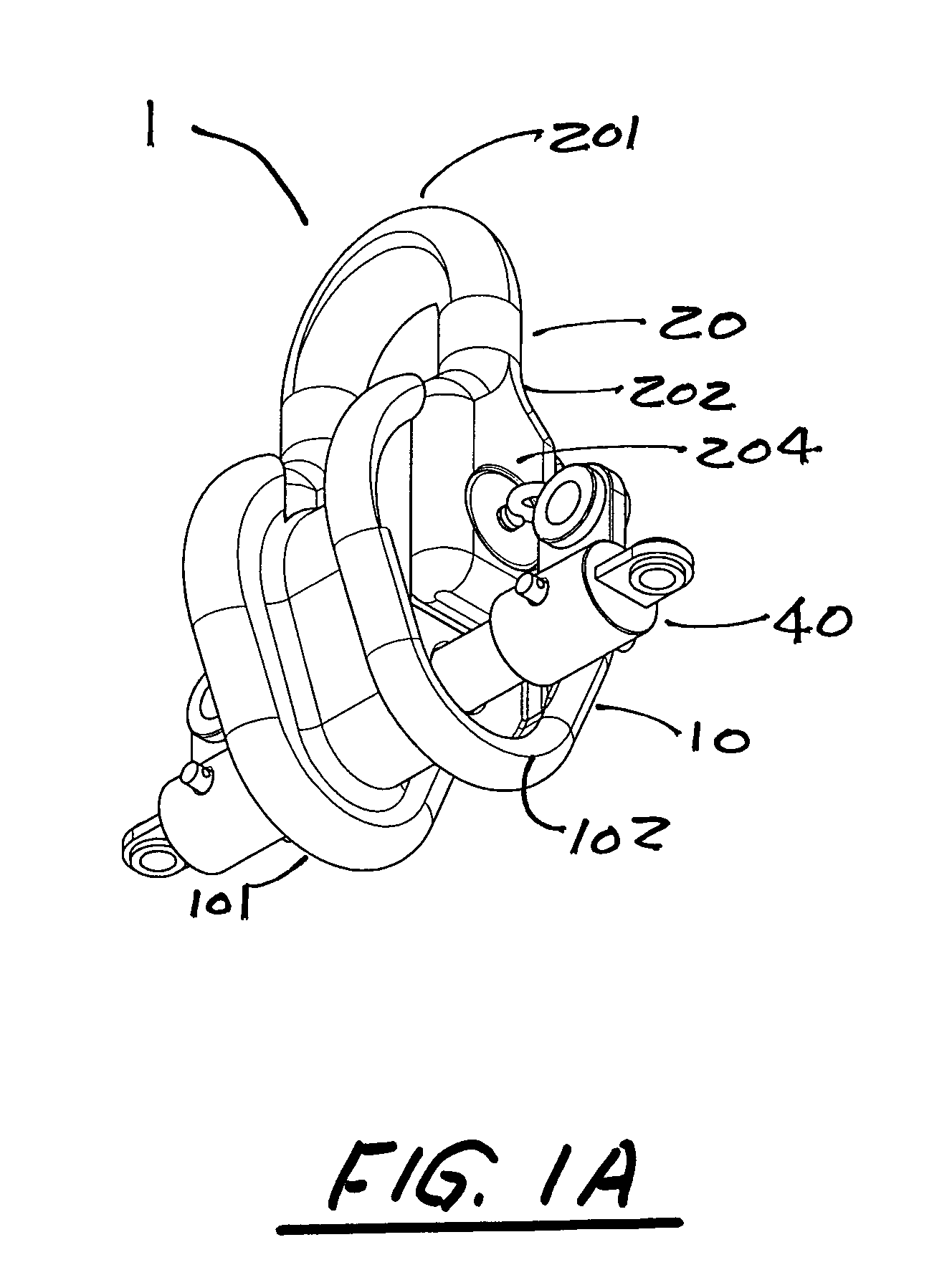Detachable synthetic rope connector
a synthetic rope and connector technology, applied in the direction of snap fasteners, buckles, manufacturing tools, etc., can solve the problems of insufficient allow the connection to be separated, work vessels may not have sufficient deck equipment to restrain the system, and the length of synthetic rope segments is limited, so as to increase the safety of offshore work
- Summary
- Abstract
- Description
- Claims
- Application Information
AI Technical Summary
Benefits of technology
Problems solved by technology
Method used
Image
Examples
Embodiment Construction
[0025]FIG. 1 presents the invention, termed a detachable rope connector 1, consisting of an assembly that includes a connector body 10 with a left side 101 and a right side 102, a bale 20 with an apex 201, a right side 202, a left side 203, a bottom right side end 204 and a bottom left side end 205, a main load pin sub assembly 30 and a restraining load sub assembly 40. FIG. 1A depicts a preferred embodiment of the inventive detachable rope connector.
[0026]The connector body 10 shown in FIGS. 3 and 3A and separate from the assembly in FIGS. 1, 1A, 2 and 2A, is formed similar to that of a conventional rope thimble from the standpoint that a synthetic rope 50 or rope of other construction, indicated in phantom lines in FIG. 2, can be wrapped around the connector body 10 and secured and thereby transfers a tension load from the rope 50 to the structure of the connector body 10.
[0027]As illustrated by the components shown in FIGS. 1, 1A, 2 and 2A, the detachable rope connector 1 transfe...
PUM
| Property | Measurement | Unit |
|---|---|---|
| length | aaaaa | aaaaa |
| tension | aaaaa | aaaaa |
| diameter | aaaaa | aaaaa |
Abstract
Description
Claims
Application Information
 Login to View More
Login to View More - R&D
- Intellectual Property
- Life Sciences
- Materials
- Tech Scout
- Unparalleled Data Quality
- Higher Quality Content
- 60% Fewer Hallucinations
Browse by: Latest US Patents, China's latest patents, Technical Efficacy Thesaurus, Application Domain, Technology Topic, Popular Technical Reports.
© 2025 PatSnap. All rights reserved.Legal|Privacy policy|Modern Slavery Act Transparency Statement|Sitemap|About US| Contact US: help@patsnap.com



